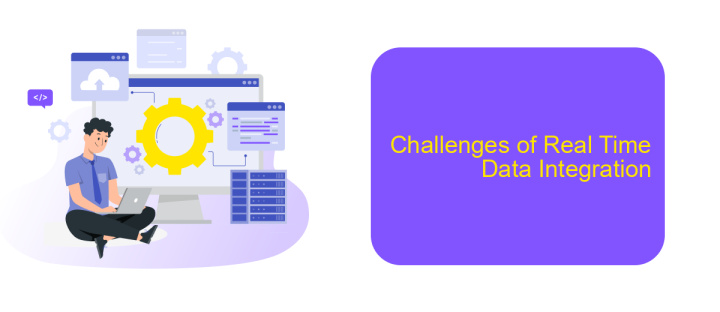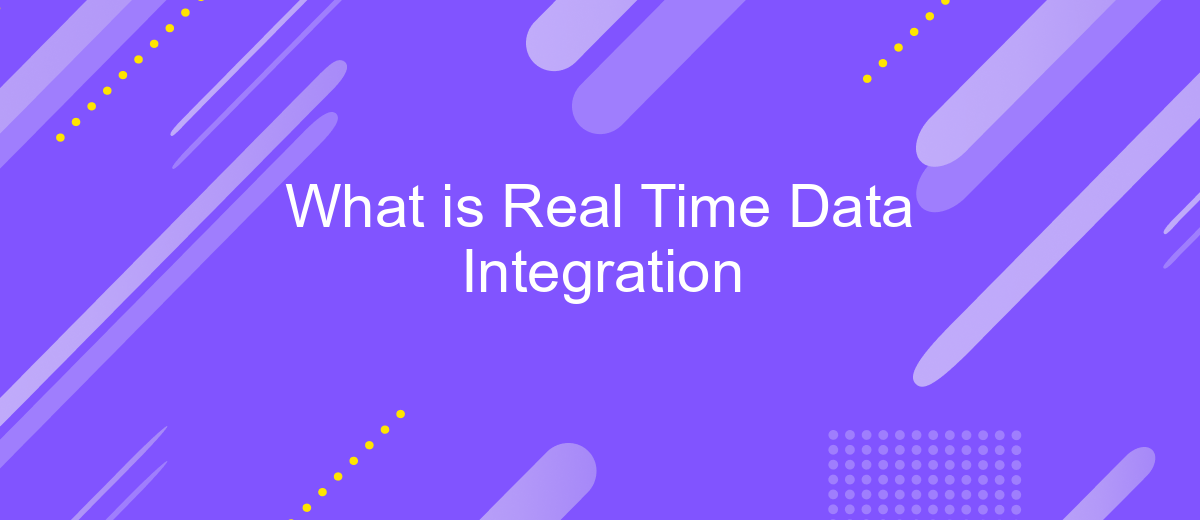What is Real Time Data Integration
Real-time data integration is a process that enables the seamless and immediate transfer of data across various systems and platforms. This method ensures that information is consistently updated and accessible, allowing businesses to make informed decisions swiftly. In an era where timely data is crucial, understanding real-time data integration is essential for maintaining competitive advantage and operational efficiency.
Introduction
Real-time data integration is a crucial aspect of modern data management, enabling organizations to process and utilize information as soon as it is generated. This approach ensures that businesses can respond quickly to changes, make informed decisions, and maintain a competitive edge in their respective industries. By integrating data in real-time, companies can streamline their operations, enhance customer experiences, and improve overall efficiency.
- Immediate data processing and availability
- Enhanced decision-making capabilities
- Improved operational efficiency
- Better customer experiences
- Competitive advantage
One effective tool for achieving real-time data integration is ApiX-Drive. This service allows businesses to connect various applications and automate data workflows without requiring extensive technical expertise. By leveraging ApiX-Drive, companies can easily set up and manage integrations, ensuring that their data is always up-to-date and accessible. This seamless integration process helps organizations stay agile and responsive in an ever-changing business landscape.
What is Real Time Data Integration?

Real-time data integration refers to the continuous, seamless synchronization of data between different systems and applications as soon as it is generated. This approach ensures that the most current data is always available across various platforms, enabling organizations to make timely and informed decisions. By leveraging real-time data integration, businesses can enhance operational efficiency, improve customer experiences, and gain a competitive edge through rapid data-driven insights.
One of the key components of real-time data integration is the use of advanced integration platforms like ApiX-Drive. ApiX-Drive facilitates the automatic transfer of data between applications without the need for manual intervention, thus reducing errors and saving time. It supports a wide range of apps and services, making it easier for businesses to connect their existing systems and automate workflows. By utilizing such services, organizations can ensure that their data is consistently up-to-date and accessible, ultimately driving better business outcomes.
Benefits of Real Time Data Integration

Real-time data integration offers numerous advantages that can significantly enhance business operations. By ensuring that data is updated and available instantly, organizations can make more informed decisions and respond to changes swiftly.
- Improved Decision-Making: Access to up-to-the-minute data allows businesses to make decisions based on the most current information available.
- Increased Efficiency: Automation of data integration processes reduces manual effort, saving time and resources.
- Enhanced Customer Experience: Real-time data helps in providing personalized and timely responses to customer needs.
- Better Data Accuracy: Continuous data synchronization ensures that all systems have consistent and accurate information.
- Competitive Advantage: Businesses can stay ahead of competitors by quickly adapting to market trends and customer demands.
Services like ApiX-Drive facilitate seamless real-time data integration by automating the data flow between various applications and systems. This not only streamlines processes but also ensures that data is always current and reliable, empowering businesses to thrive in a fast-paced environment.
Challenges of Real Time Data Integration

Real-time data integration presents a myriad of challenges that organizations must navigate to ensure seamless and efficient data flow. One of the primary obstacles is data consistency, as real-time systems need to synchronize data across various platforms and applications without discrepancies.
Another significant challenge is latency. Minimizing the delay in data transfer is crucial for maintaining the integrity and usefulness of real-time data. High latency can lead to outdated or irrelevant information, which can adversely affect decision-making processes.
- Data volume and velocity management
- Ensuring data security and compliance
- Scalability of integration solutions
- Handling diverse data formats and sources
Utilizing integration platforms like ApiX-Drive can help mitigate some of these challenges. ApiX-Drive offers automated data synchronization across various applications, reducing the complexity of real-time data integration. By leveraging such tools, organizations can focus on strategic initiatives rather than the technical intricacies of data integration.


Conclusion
Real-time data integration has become a cornerstone for businesses aiming to maintain a competitive edge in today's fast-paced digital environment. By enabling the seamless flow of information across various systems and platforms, companies can make more informed decisions, improve operational efficiency, and enhance customer experiences. The ability to integrate data in real time ensures that organizations can respond swiftly to market changes, customer needs, and emerging opportunities.
Implementing real-time data integration can be challenging, but tools like ApiX-Drive significantly simplify the process. ApiX-Drive offers a user-friendly interface and robust features that allow businesses to effortlessly connect disparate systems and automate workflows. By leveraging such services, organizations can reduce the complexity and cost associated with traditional integration methods, ensuring a smoother and more efficient data management process. Ultimately, embracing real-time data integration is not just a technological upgrade but a strategic move that can drive growth and innovation.
FAQ
What is Real Time Data Integration?
Why is Real Time Data Integration important?
What are the common use cases for Real Time Data Integration?
How can I implement Real Time Data Integration in my business?
What are the challenges of Real Time Data Integration?
Apix-Drive is a universal tool that will quickly streamline any workflow, freeing you from routine and possible financial losses. Try ApiX-Drive in action and see how useful it is for you personally. In the meantime, when you are setting up connections between systems, think about where you are investing your free time, because now you will have much more of it.

